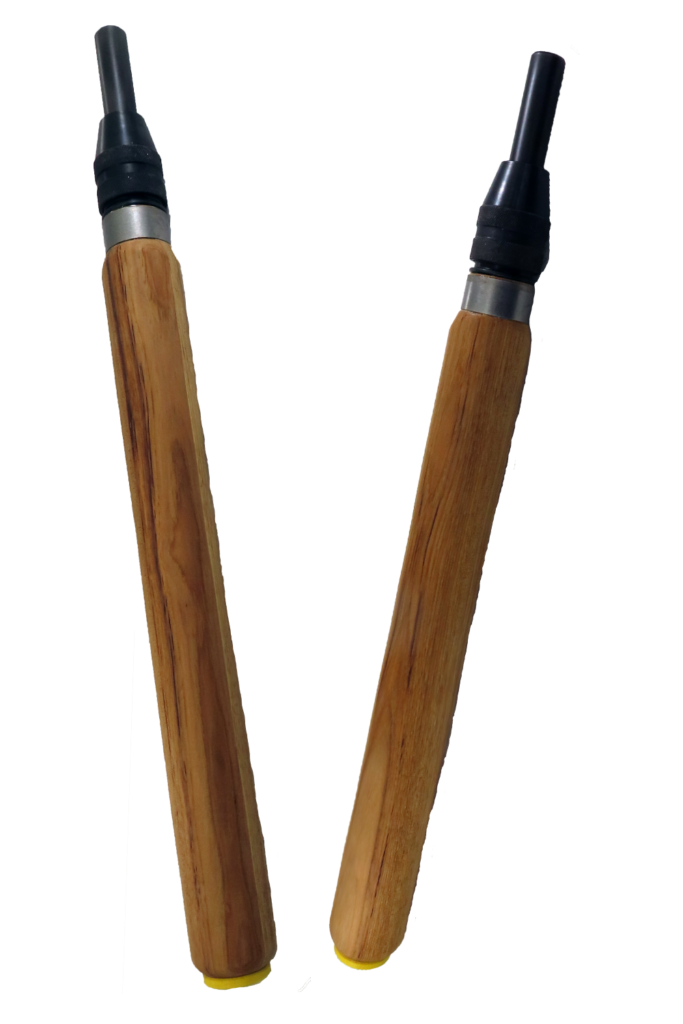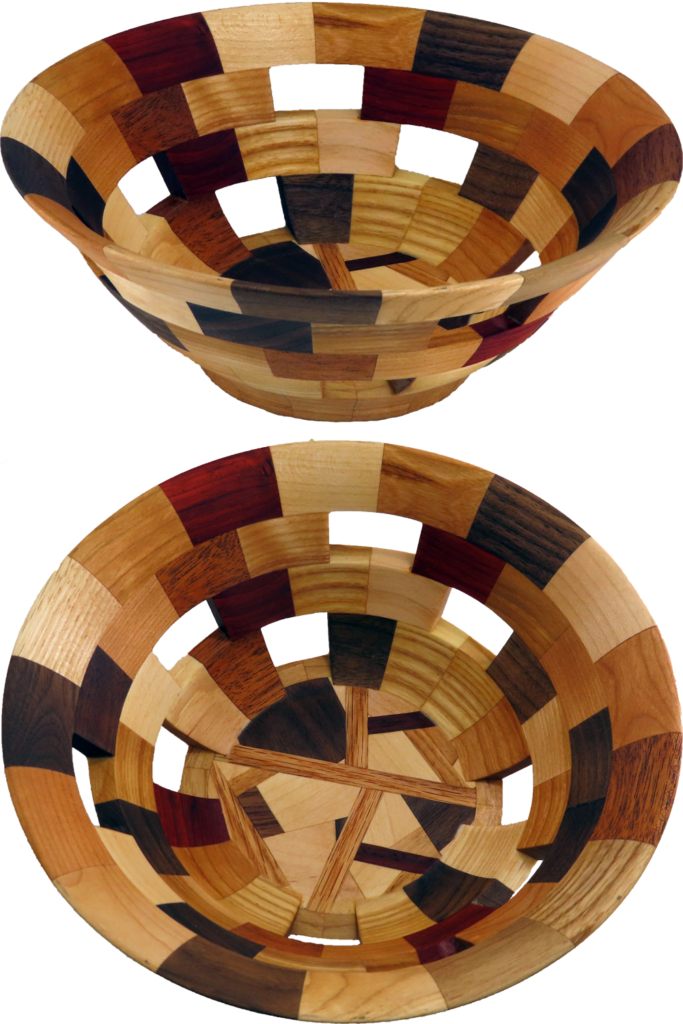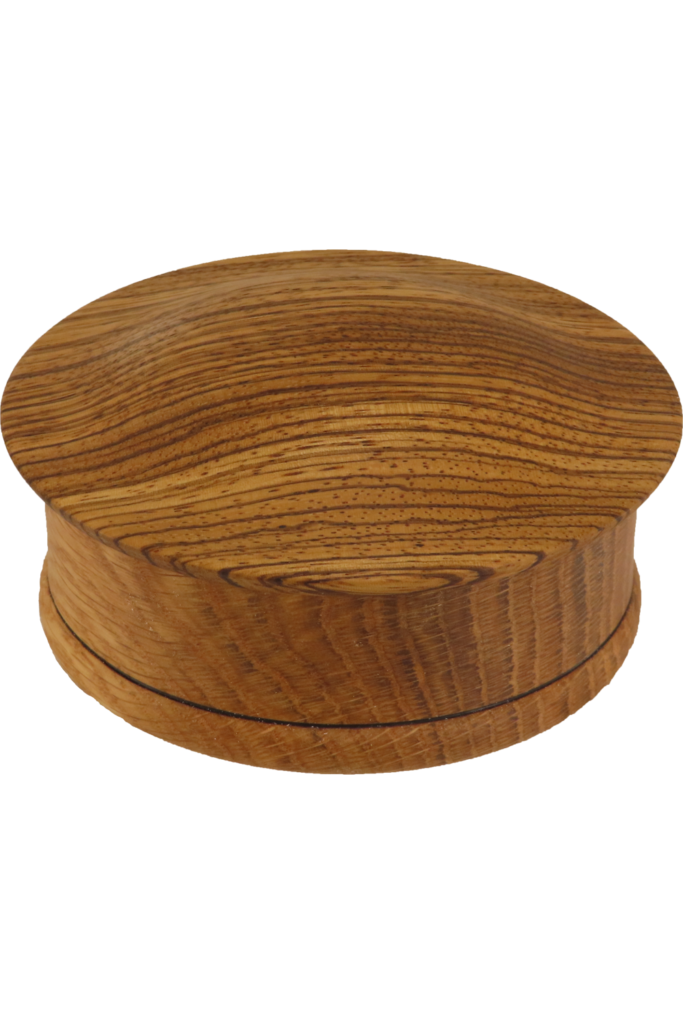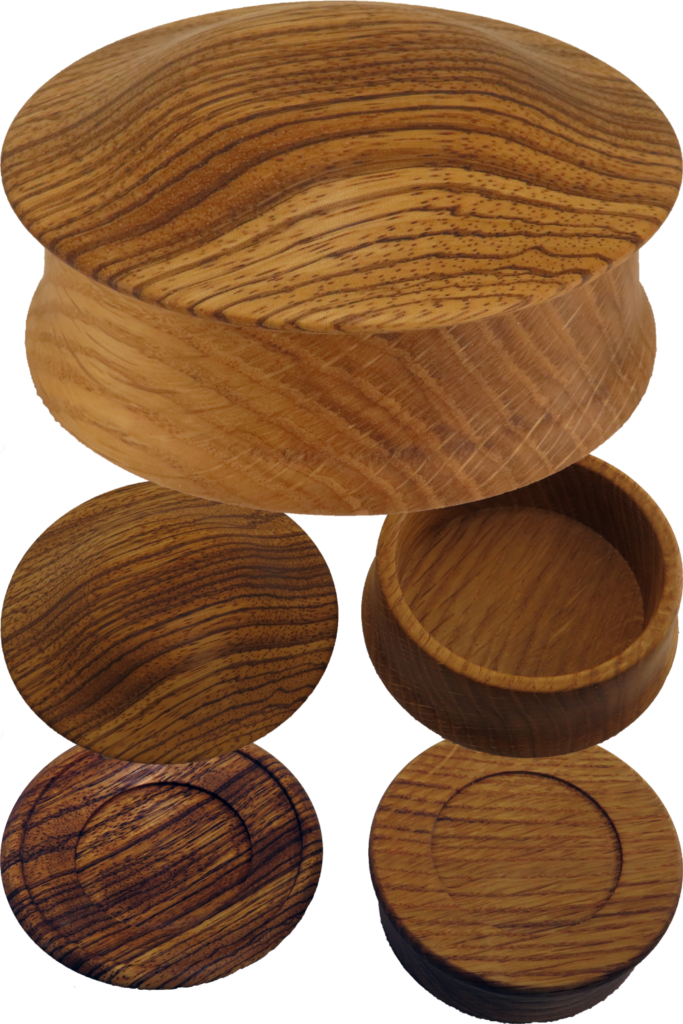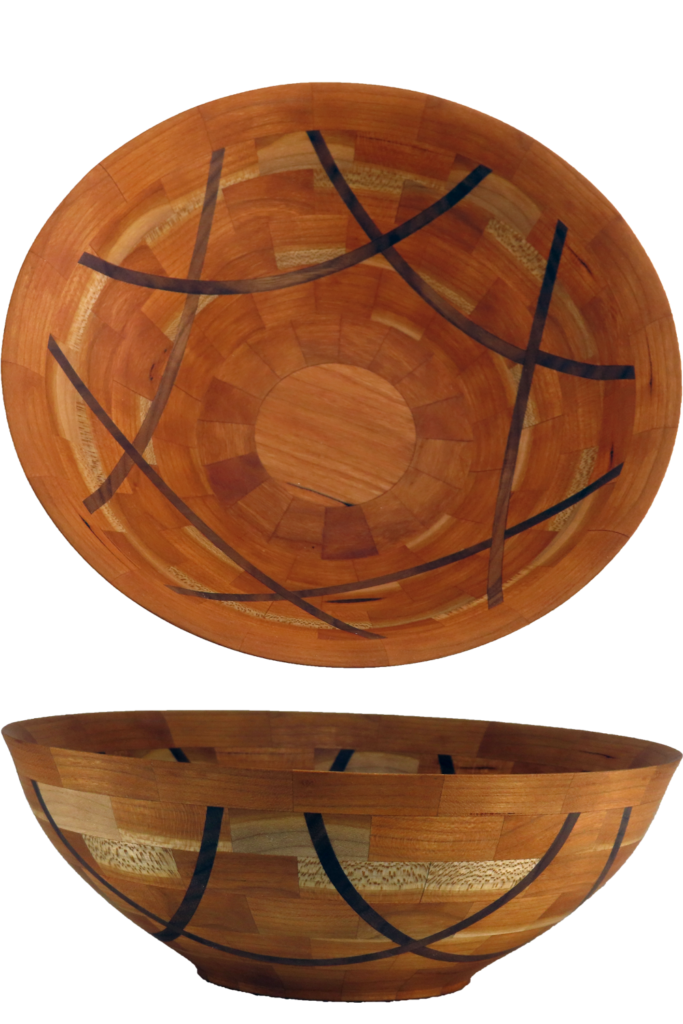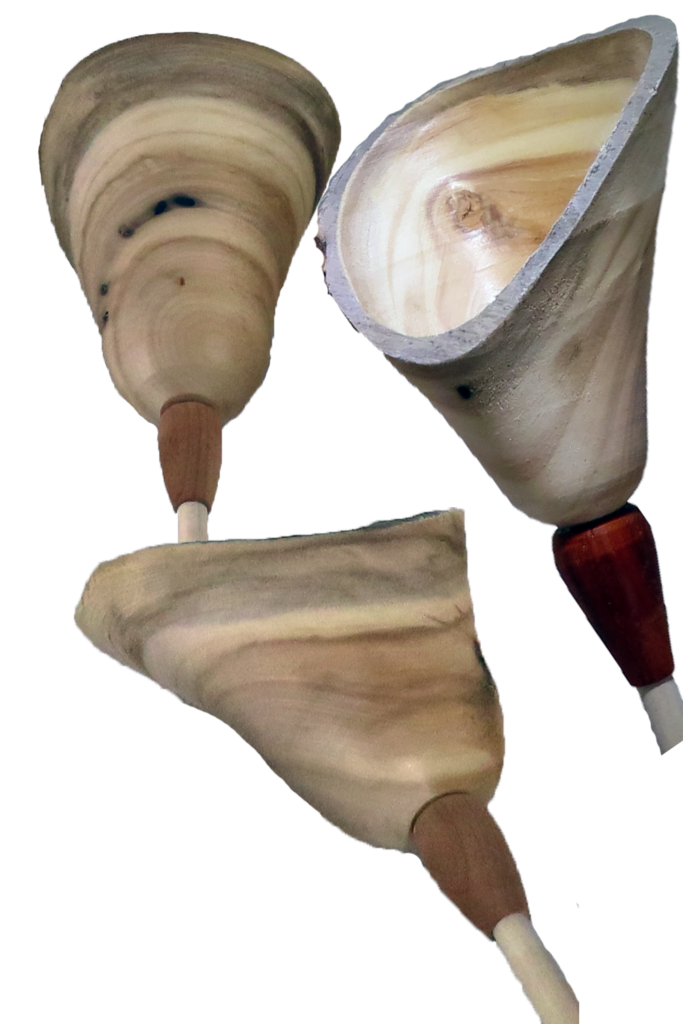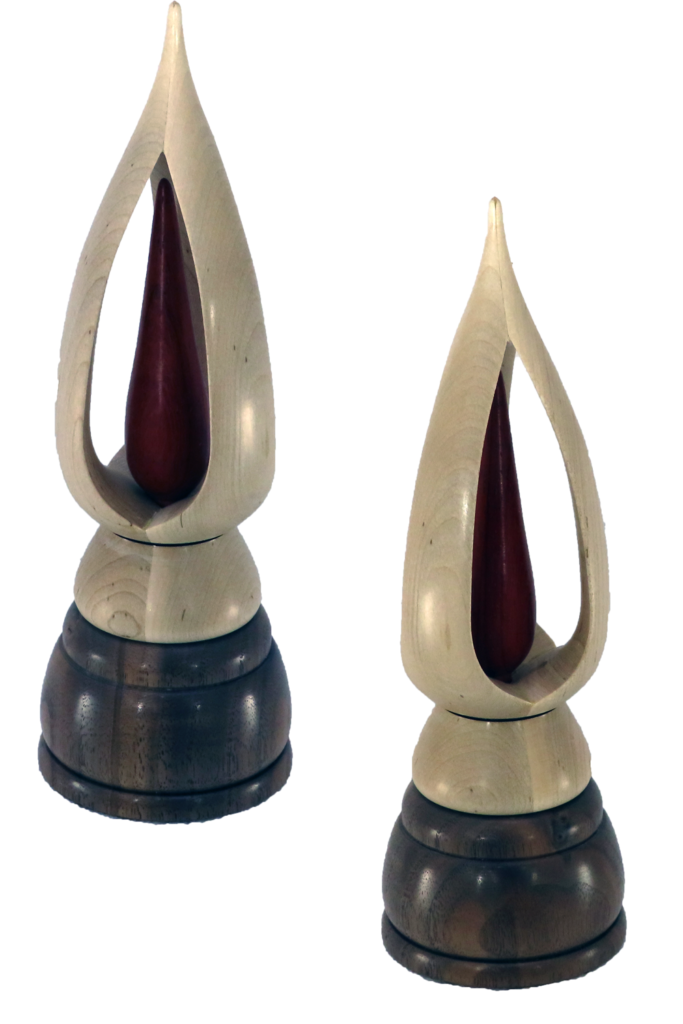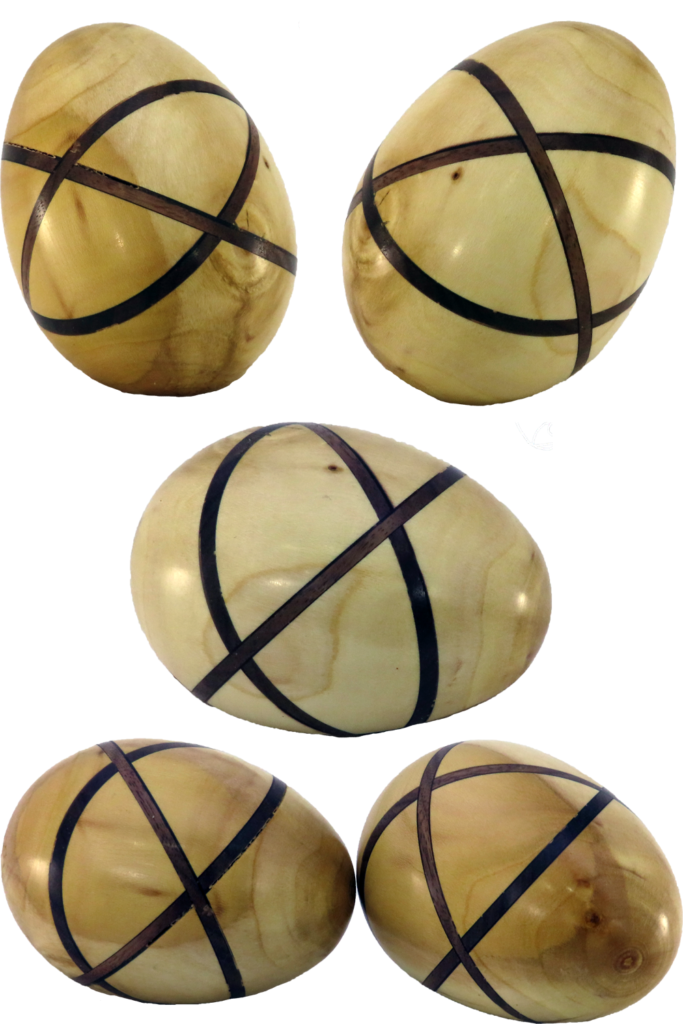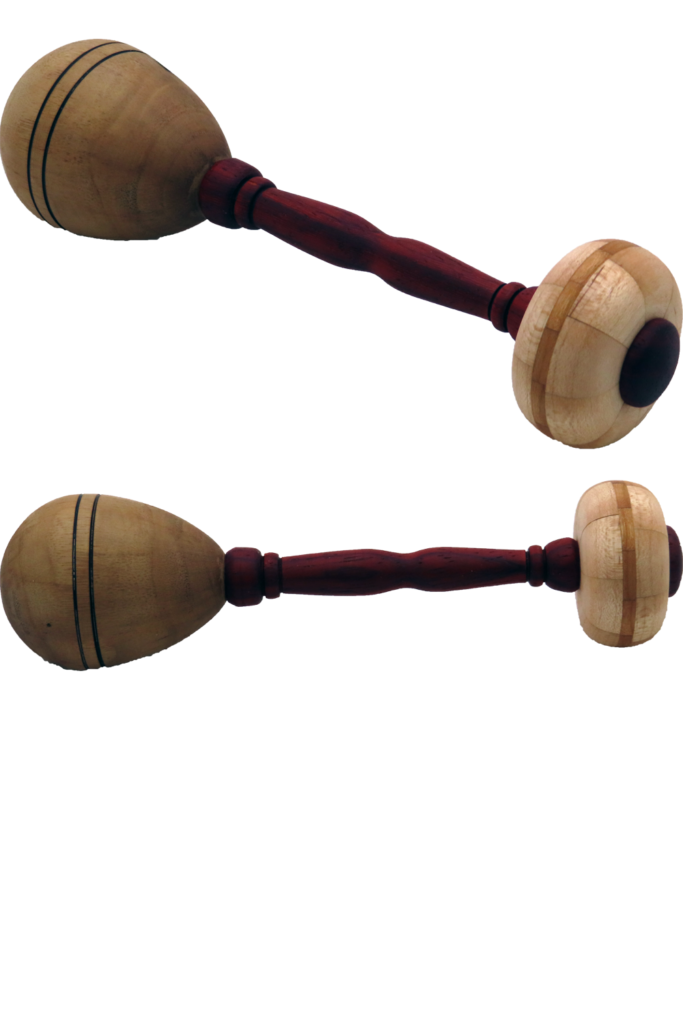Exploring Turning Tool Handles – Interchangeable And DIY
This video is best viewed right here. However, in case of difficulty such as a gremlin attach, it is also posted on YouTube and FaceBook.
Most lathe tools come with handles. But why? Do we have to buy them with handles? Plus, if we are making our own handles, why not use the same handle.
I have been thinking about this issue for a long time. Some new handle systems have shown promise – only to be discontinued.
When I saw this kit from Robust Tools, I was intrigued. A single handle with several common collets. They also offer the kit complete with a wood handle. But where is the fun in that?
This is a set of ER32 collets which accept round cylinders (such as tool steel) in 3/8, 1/2, 5/8, & 3/4″. Other sizes are available from machine tool suppliers. There is a smaller set which starts at 1/4″.
The handle is hickory whcih has been hollowed and taped for a 1x8tpi which is common for smaller lathes. In the taped end, I can add additional weight if desired. My handle is 18″ long finished with mineral oil and beeswax.
I still wonder how to “handle” rectanglar tools. Ideas?
ERRATA – At AAW, I learned more:
- Robust Tools said their collets will accept rectangular tools as long as the rectangular portion is NOT tapered.
- I purchase their smaller ER-25 kit for another experiment.
- SB is again making their carbon fiber handles and the system. Still very expensive.
Enjoy.
Not So Basic Segmented Patchwork Turned Bowl
This post is best viewed here on this page. However, if there are difficulties, it is also posted on YouTube and FaceBook.
At club meeting, we had a great introduction to segmented turning. Ken, who presented went the extra (many) mile(s) to prepare segmented bowl kits with segments and a base for a bowl.
I decided to elevate my bowl by leaving out random segments and by swapping the base for one that looks better and will survive the ravages of humidity changes.
My base is a random glue up of scraps from previous projects. To stabilize this glue up, I glued it to oak veneer and cross banded one piece before gluing it into the base. Please see the video for details and the sequence.
I also left out random segments from intermediate rings. This presented its own set of difficulties but nothing a set of large band clamps could not handle.
The bowl is various woods, five rings of 16 segments each for 80 segments total. Even though some segments are missing, they still had to be there to complete the turning. The bowl is 8.5 inches diameter and 3 inches tall and finished with walnut oil.
Enjoy.
How To Remount To Finish A Demonstration Project
This video post is best viewed here on this page. However, in case of difficulty, it is also posted on YouTube and FaceBook.
Many times in a club demonstration, I skip sanding and potentially other steps that are repetitive or take too much time. The problem then is how to finish the project. That was very nice wood – I would hate to put it into the burn pile.
If you recall, a cross grain box process requires at least three mounts each for the base and the lid.
But what if you now need to go back a couple of steps to sand and finish and perhaps adjust the form?
Similarly to the original project, this is an exercise in mounting the wood to the lathe. It is then a matter of how far back in the process and what additional adjustments may be required.
To repeat the original process:
Base:
- Press against closed jaws while turning a sacrificial mortise on what will be the inside;
- Mount with sacrificial mortise; Turn underside including a mortise; complete with final finish.
- Mount with mortise on underside; Turn remainder of interior and exterior. Finish
Lid:
- Press against closed jaws while turning a sacrificial mortise on what will be the underside;
- Mount with sacrificial mortise; cut a shallow sacrificial tenon on what will be the top in wood that will be cut away;
- Mount with sacrificial tenon; Shape underside of lid; fit to base; cut another shallow mortise; Finish underside of lid;
- Mount with shallow mortise on underside of lid; turn top of lid.
I have also found that I am allergic to zebra wood. I now have to take extra precautions to finish this box.
Just like my practice box, this box is also finished with beeswax and mineral oil which was also used as sanding media.
.25 pound beeswax chopped to 1 pint mineral oil. Safely (double boiler) melt together and mix. But I have better idea.
Enjoy.
How To Mount and Woodturn Multi Wood Cross Grain Box
This video is best viewed here on this page. However, in case of difficulty, it is also posted on YouTube and FaceBook.
Before I do a club demo, I like to run through the process as refresher practice. I felt I might as well make and share my practice in this video.
I am sure that a cross grain box may be turned several ways. This way is my favorite using closed chuck jaws for the initial mount instead of a screw chuck. I like it because I do not have to be careful to not drill too deeply.
The process does require at least three mounts each for the base and the lid.
Base:
- Press against closed jaws while turning a sacrificial mortise on what will be the inside;
- Mount with sacrificial mortise; Turn underside including a mortise; complete with final finish.
- Mount with mortise on underside; Turn remainder of interior and exterior. Finish
Lid:
- Press against closed jaws while turning a sacrificial mortise on what will be the underside;
- Mount with sacrificial mortise; cut a shallow sacrificial tenon on what will be the top in wood that will be cut away;
- Mount with sacrificial tenon; Shape underside of lid; fit to base; cut another shallow mortise; Finish underside of lid;
- Mount with shallow mortise on underside of lid; turn top of lid.
In this case I used two different woods for lid and base. The lid is zebra wood with its striking grain. The base is white oak which is pretty but more subdued than the zebra wood.
This box is finished with beeswax and mineral oil which was also used as sanding media.
Enjoy.
Woodturning Segmented Bowl With Celtic Style Inserts
This video is best viewed here on this page. In case of difficulty, it is also posted on YouTube and FaceBook.
In past videos, I have explored variations on Celtic knots far beyond the traditional four loop Celtic knot found on spindles:
-Varying the number of loops 3,4,5,6…
-Celtic knots on spindles using the table saw;
-Celtic knots on vases using the bandsaw;
-and now Celtic knots on a bowl.
A Celtic knot from square spindle stock is the simplest of all variations. This bowl is not a spindle and is absolutely not square.
I have found three principles that, if adhered to, enable a perfect knot. Since a knot has many intersections, a perfect knot has perfect alignment at intersections.
- Indexing for repeatable cuts;
- Replacing the removed wood exactly;
- Maintaining exact positioning when inserting splines.
Jigs are essential to this process.
Enjoy.
Woodturning Spring Blossoms – This Year Spring Needs Help
This video post is best viewed here on this page. However, in case of difficulty, it is also posted on YouTube and FaceBook.
Spring is finally showing evidence of coming. For this video, I found another style of flower that is very fun and interesting. It is turned from a log slice while maximizing the amount of natural edge across the flower bloom.
It is tough to visualize and layout for success. I also needed a slight modification to a tenon faceplate to use on the live center.
For more flowers, please visit these videos:
Woodturning – Three Ways To Turn Flowers
Woodturning Followup – Adding Fuzzy Flowers To Bouquet
Enjoy.
Inside Out Woodturning Classic – Three Stave Flame
This video is best viewed here on this page. But, in case of difficulty, it is also posted on YouTube and FaceBook.
Sorry to leave you hanging last week. 🙂 But, I could not pack it all into one video. Last week, we cut staves for a triple inside out project. That has now turned out – into a flame – one of my favorites.
With the base, the flame is about 2.5 inches by 8 inches. The base is walnut; the outer flame is maple; the inner flame is padauk. All are finished with shellac.
A triple inside out is similar to a quad or four stave. The difference in preparation is cutting the staves. A four stave is easily cut since all angles are 90 degrees. A triple requires a parallelogram with angles of 60, 120,60,120. So, last week, we cut the staves. This week we turned the flame.
This link goes to a detailed step description to successfully cutting the staves plus a diagram to explain the minimal calculations (2 of them) to get things right.
Enjoy.
Inside Out Woodturning Basics – Cutting Beveled Staves
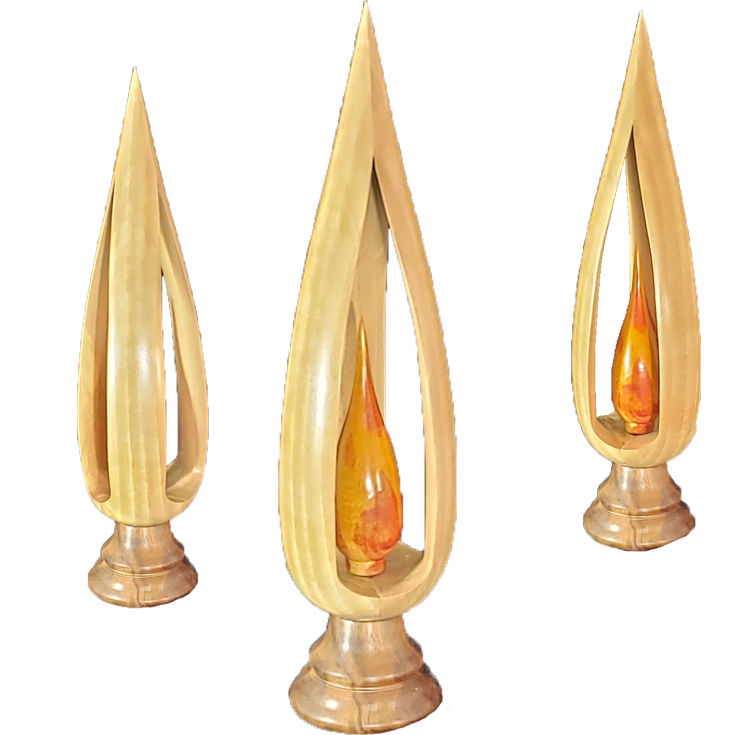
This post is best viewed here on this page. In case of difficulty, it is also posted on YouTube and FaceBook.
This video addresses essential preparation for an inside out turning. You may say “That is simple – just mill four square pieces of wood”. Not so fast.
What if you want larger windows into the soul of the turning? This means three staves. The angles on the three staves are not square – they must be precisely 60 and 120 degrees around each stave.
What if you want more narrow windows or more staves around the interior? This means six staves that are very similar to the three stave setup. All angles are the same. However, twice as many staves are required.
My favorite tool for cutting the staves is a tablesaw. With proper jigs, I believe the saw is much safer than using a bandsaw. A bonus is smoother cuts.
The link below goes to a detailed step description to successfully cutting the staves plus a diagram to explain the minimal calculations (2 of them) to get things right.
Enjoy.
Woodturning Easter Eggs With Three Lobe Celtic Knot
This video is best viewed here on this page. However, in case of difficulty, it is also posted on YouTube and FaceBook. If you have not already subscribed here on this side, please do so in the upper right corner.
These two eggs are cherry and walnut. The cherry came from a branch that is now well dried. In fact, it is dry enough that it has a large drying crack that I will have to deal with.
For the Celtic knot, the wood is first roughed round. Then templates are attached to both ends. A simple sled provides a sawing platform. Scrap wood provides alignment and support for the cuts.
When cutting, each slice is cut individually, replacement wood is inserted with slow epoxy.
Then the second cut, Replace wood, Then the third cut and replace wood.
Any number of slices can be used depending on the DIY template.
Then turn the egg using part of the sphere octagon process for the big end. There is no template for the small end but chicken eggs vary significantly anyway.
These eggs are finished with shellac.
Enjoy.
Egg posts:
Woodturn Simple Egg Chuck From PVC Fitting
Woodturning – A Search For The Perfect Egg
Woodturning Rattle Compliant With Government Regulation Gauge
This post is best viewed here on this page. But, in case of difficulty, it is also posted on YouTube and FaceBook.
This project is a rattle most likely for a child since I do not foresee an adult playing with it.
One end is egg shaped; the other is a fat disk. Most importantly, any rattle for a child must be compliant with Code of Federal Regulations section 1510.4 Title 16. This regulation specifies that a rattle must not protrude through a test fixture designed to represent a child’s mount and throat.
I 3D printed the test fixture. The object file is posted on a PRUSA share site.
https://www.printables.com/model/438810-rattle-fixture-to-assess-compliance-with-15104
The woods are walnut sapwood, padauk, maple, and cherry.
For noise, I recommend edible objects such as popcorn, pasta, rice. Do not use beans as they can swell. I wonder about skittles or mini M&M. Accessing the rattle contents will destroy the rattle but must not do harm to the child.
My rattle is 2″ diameter and 7″ long, finished with walnut oil. Walnut oil is food safe. I also avoid any film finish on a project intended for a child.
Enjoy.
Sphere posts:
Turn A Perfect Wood Sphere Or Ball – No Expensive Jig
Woodturning Essentials – Octagon Method For Perfect Spheres
How To Turn Perfect Hollow Sphere – No Jig
Woodturning Perfect Spheres – For Wise Turners
